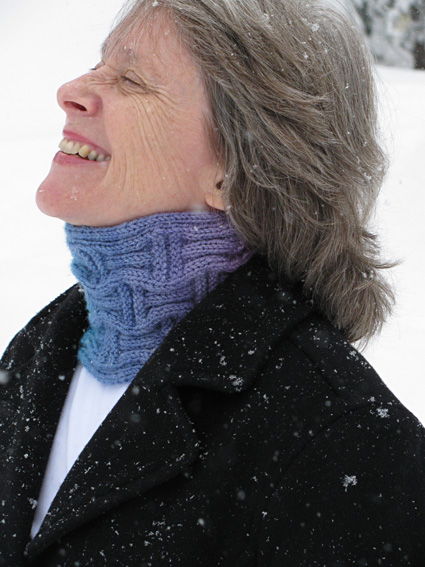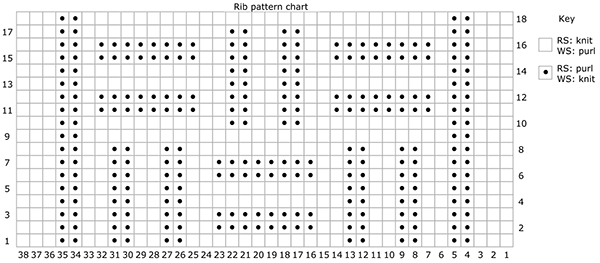

|
|
|

The Kayak cowl was a present I designed for my cousin Mary, who loves to kayak but finds that scarves are too bulky (and too likely to fall in the water). But she needs something to keep her neck warm, so here is my answer to the problem. Created for those two-three ounce handdyed tops that I never seem to be able to resist, this cowl can be snug or longer. The knitting is straightforward but the cowl does involve grafting the two ends using Kitchener stitch. However, you can also make it just a BIT longer and use buttons; just start with a garter edge and put four equally spaced yarnovers before your closing garter edge! This double basket stitch from the Barbara Walker's A Treasury of Knitting Patterns is very stretchy and interesting, not wholly reversible but very similar on both sides. For the spinning, I often split a four-ounce handdyed top into two equal halves, since I only need a little more than two ounces. I set one half aside for another project and then split the remaining half in half again and I am ready to spin. Because BFL and BFL/Silk blends make particularly bouncy yarn when spun worsted and Navajo plied, I drafted one of my lengths and then spin it worsted-style. I join these two lengths end to opposite end, so if the colors ran blue-green-yellow, I would spin the first length blue-green-yellow, then join the next length yellow-green-blue. With this arrangement, after Navajo plying and knitting, I will be grafting the same colors together and preserving the colorway that the dyer created for me. |
||
|
|
||
|
SIZE |
|
|
FINISHED MEASUREMENTS |
|
MATERIALS
Tools |
|||||
|
GAUGE |
| 20 sts/32 rows = 4 inches in st st 28 sts/34 rows = 4 inches in patt st, unstretched |
|
PATTERN NOTES |
|
This pattern uses a slightly unusual method for a provisional cast on: use a smooth contrasting color yarn, and your preferred CO and work a few rows. Then join your working yarn to work the project. When the time comes to undo the provisional CO, snip the last stitch of your contrast knitting right at the edge, and slowly unravel this yarn, exposing the lower edge of the first row in the project yarn. When you unravel, you might find that you have one stitch more or less than the stitches on the other end of the project. You can fudge it, either by creating an extra stitch on one end, or by working together two stitches from one end with one stitch from the other. Grafting: Rib Pattern Row 1 [WS]: P3, (k2, p2) twice, k2, p12, (k2, p2) twice, k2, p3. |
 |
|
DIRECTIONS Change to project yarn. Carefully detach your first row from your provisional cast on (see pattern notes) and with RS facing, graft the two ends together. |
|
FINISHING |
| ABOUT THE DESIGNER |
|
Laurie Osborne is thatlaurie on Ravelry and, in her non-knitting life, a professor of English literature at Colby College in Maine. Guess what her specialty is! |
|
Pattern & images © 2014 Laurie Osborne. Contact Laurie |